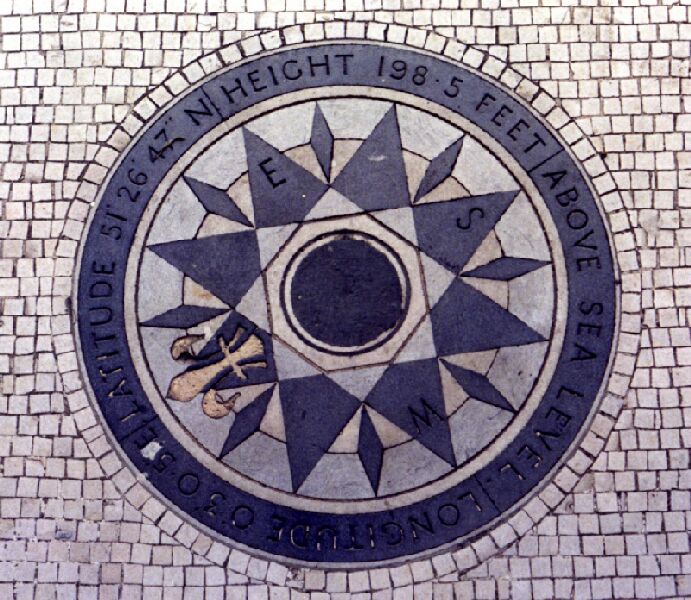PART 2: THE SHIP
So visitors would arrive at the ‘temple’entrance, and walk in through the two tall, narrow temple doors behind the pillars. How astounded and amazed they must all have been to find themselves, not in a temple, not in a house, but on a transatlantic liner! What a feeling of holiday excitement, and amusement, and fantasy, must have seized them! The huge entrance hall is a replica of the lounge of a 1930s liner, with curved wooden walls, a ship’s staircase, huge portholes, distinctive tub chairs arranged in circles, two huge seascapes on the walls, and outside, the semi-circle of the moat. One of the seascapes depicts Stockholm, its islands, its buildings, and there, in the harbour, is the transatlantic liner called The Stockholm. we are surely meant to conclude that we are on The Stockholm. There also is The Virginia, a yacht belonging to Stephen Courtauld. On another seascape depicting Venice, we see the Eun Mara, another of Stephen Courtauld’s yachts. The ceiling of the room is domed, as found in some transatlantic liners; this also recalls the theme of the temple of Vesta. At night, guests would have found that their bedrooms were ship’s cabins, and from the window of one of these cabins is a most brilliant optical illusion of the prow of the ship, the mast and the sea.
If we walk out of the opposite door which leads to the garden, we pass a mosaic of a ship’s compass giving details of our present latitude and longitude (see Photograph 11). Finally the water of the moat completes the illusion that the ship is at sea. Thus we seem to be surrounded by water: the moat on one side, and the seas around Venice and Stockholm on the other.

The Courtaulds loved sailing, both in their own yachts and also in transatlantic liners. This is one of the reasons why so much of the house represents a ship, though there are further reasons relating to the history of the ancient palace why the ship analogy is very appropriate. Downstairs, Virginia’s sitting room has a huge map on the wall showing south-east London, the Thames, and ships sailing on it. From this we surmise that we are now sailing down the Thames, and indeed another picture in the same room confirms this, showing the river Thames centuries ago. This was the room where the family stored maps, and it represents the chart room of a ship. Why? What kind of person on board ship uses a map? It is the captain, the navigator, who decides the direction that the ship will take. In real life, in their marriage, it was Virginia who decided where they would go, what they would do, what direction their lives would take; she was the captain, while her husband followed on, indulged her, and paid the bills. This message about a ship has already been suggested by the second door in Virginia Courtauld’s bedroom: one of the panels shows a ship (See Figure 1).
The room next to her sitting room is Stephen’s library. This represents the state room of a ship, with built-in furniture, space saving features, and water colours of the sea by Turner around the walls. Why? What sort of person stays in the state room of a ship? A very rich, important traveller. This seems to be the architects’ comment on Stephen and Virginia Courtauld.
Stephen Courtauld’s bedroom has already been mentioned; his adjoining bathroom continues the theme of the sea. We open the door of the bathroom, and suddenly seem to be walking on the sea floor in nine feet of water. The water is a Mediterranean blue, and the floor is green, with suggestions of little white shells and pebbles. These effects are achieved by the use of tiles and mosaics, which give a Roman feel to the room, thus linking the two themes.
There are also themes which have not yet been fully interpreted and clues which have not been deciphered; more interpreters are needed. The interpretation of Eltham Palace is a work in progress. Some parts will probably never be decoded; in the basement of the building there is a mural which clearly relates to incidents in the personal lives of the couple, but will probably never be explained. The Venetian Room, where Virginia Courtauld’s mother sometimes stayed, is particularly intriguing.
Did the Courtaulds understand the symbolism of the house? It is possible that they did indeed decipher the messages, or that they were aware of the significance of the design from the outset, but did not reveal them. Perhaps this was an essential part of the architects’ plan: everybody would have to decipher the meaning for themselves, so the excitement and pleasure would be new for each visitor. They must have waited all their lives for the meaning of the house to be recognised by others. Today, we must regard the house as a unique and enchanting game, a walk-in puzzle, a fantasy world which will fill us with delight, amusement, and endless intellectual challenge.
Next part: Problems encountered by modern visitors to the site
